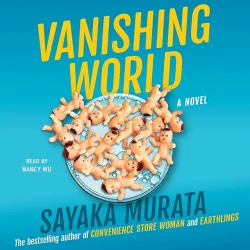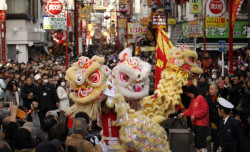
January 28, 2010
Weighty Issues
With a diet of ramen, gyudon and burgers, how do the Japanese stay so slim?
By Metropolis
Originally published on metropolis.co.jp on January 2010
Succulent sushi, light-as-air tempura, super-fresh sashimi, handmade soba… it’s hard to describe Japanese food without using elegant terms. In guidebooks and magazines, on cooking shows and in cookbooks, the virtues of the heavenly Japanese diet are extolled far and wide.
It’s not only Western literature and programming that spreads the message. Many Japanese take great pride in their food, claiming it to be tastier and healthier than any of their neighbors’ cuisines. Oily Chinese stir-fries and all those Korean spices don’t hold a candle to any Japanese delicacy. And don’t even think about comparing greasy American hamburgers or oily fish and chips from the UK to anything from Japan. Japanese food and ingredients are all fresh and delicious, homegrown and healthy.
But how well founded is this gastronomic pride?
To find out if “Japanese food” really is healthy, we must first consider what Japanese food really is. Sushi seems to be synonymous with Japan, but for most Japanese (and Westerners), this is an occasional treat and not a mainstay of the diet. Much more common are high-sodium, high-fat meals like ramen, gyudon, curry rice and processed convenience store foods. Sure, it can be argued that ramen is Chinese and curry rice is Indian, and thus their unhealthiness is not Japanese. But in reality, these dishes and many others have been Japanized.
It’s not only Asian cuisine that has been absorbed into the Japanese diet. Western foods, including the aforementioned greasy burger, are consumed more than ever in Japan. Boasting more McDonald’s than Canada, the UK and Germany combined, Japan seems intent on making the burger its official national dish. In fact, Burger King’s recent 13cm-tall, seven-patty Whopper introduced to mark the release of Microsoft’s Windows 7 OS was available only in Japan.
The Windows 7 Whopper also puts to bed another myth of Japanese food: portion size. My Japanese friends and coworkers who have visited Western countries always seem to come back complaining about the size of the meals. The mounds of meat and potatoes are always wildly overwhelming… portions like that are never found in Japan! Except, that is, in the country’s ubiquitous family restaurants and innumerable gyudon eateries that surround every train station. And in ramen shops, of course. But ramen is Chinese, let’s not forget.
If the real Japanese diet consists of things like fatty burgers and oily ramen, and the portion sizes are closer to LL than XS, then what can be the real reason for the nation’s relative health and slimness?
Japan’s healthiness is almost as well-known as its food – the country’s obesity rates are among the lowest in the world: in 2003 only 3.2 percent of the population was considered obese, compared to 9.4 percent in France, 14.3 percent in Canada and 30.6 percent in the US. What’s more, while the problem seems to be getting worse in the West, the situation is improving in Japan – since 2002, the rate of obesity among 12-17 year-olds has actually fallen. So, if it’s not the Japanese diet that’s keeping the nation trim, it must be the eating culture.

Illustration by Eparama Tuibenau
While Western and Japanese diets may have become entwined in recent years, the food culture and style of eating has remained worlds apart. In many restaurants in Western countries, food is ordered for the person, not the table. The opposite is true in Japan—food is ordered for everyone to share, which means there’s not such an onus on clearing your plate and eating all that’s in front of you. The Japanese have made moderation a tradition: enryo no katamari (literally: lump of restraint) is the name given to the last piece of food on a shared plate which nobody has the gumption to finish.
Shared dishes almost seem designed to inspire conversation and enhance the eating experience. The same goes for portion size. For many Japanese diners, tabehodai is a chance to sample a wide variety of flavors and tastes; it’s not an eating competition. The buffet restaurant is a theater of contest for some non-Japanese, and the time limit imposed by many restaurants only serves to encourage competition.
Every year, Japanese food becomes more and more international. Last February, former Prime Minister Junichiro Koizumi said at a culinary exhibition in Tokyo that “Japanese food is the most closely watched in the world.” Perhaps this is true, and while there is great merit in Japanese food, what should really be watched is the behavior of the diners, not the food itself.







